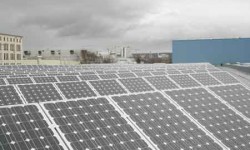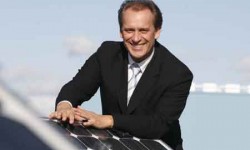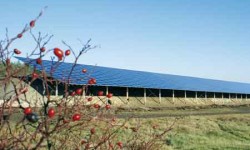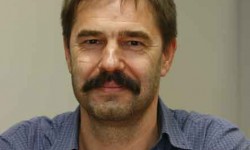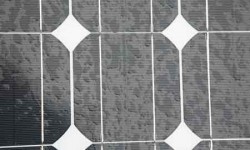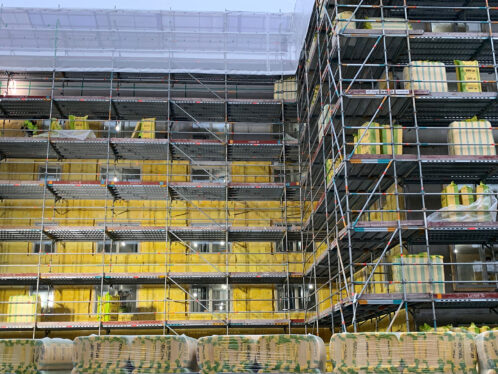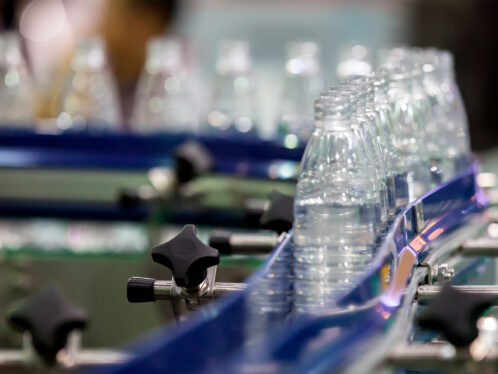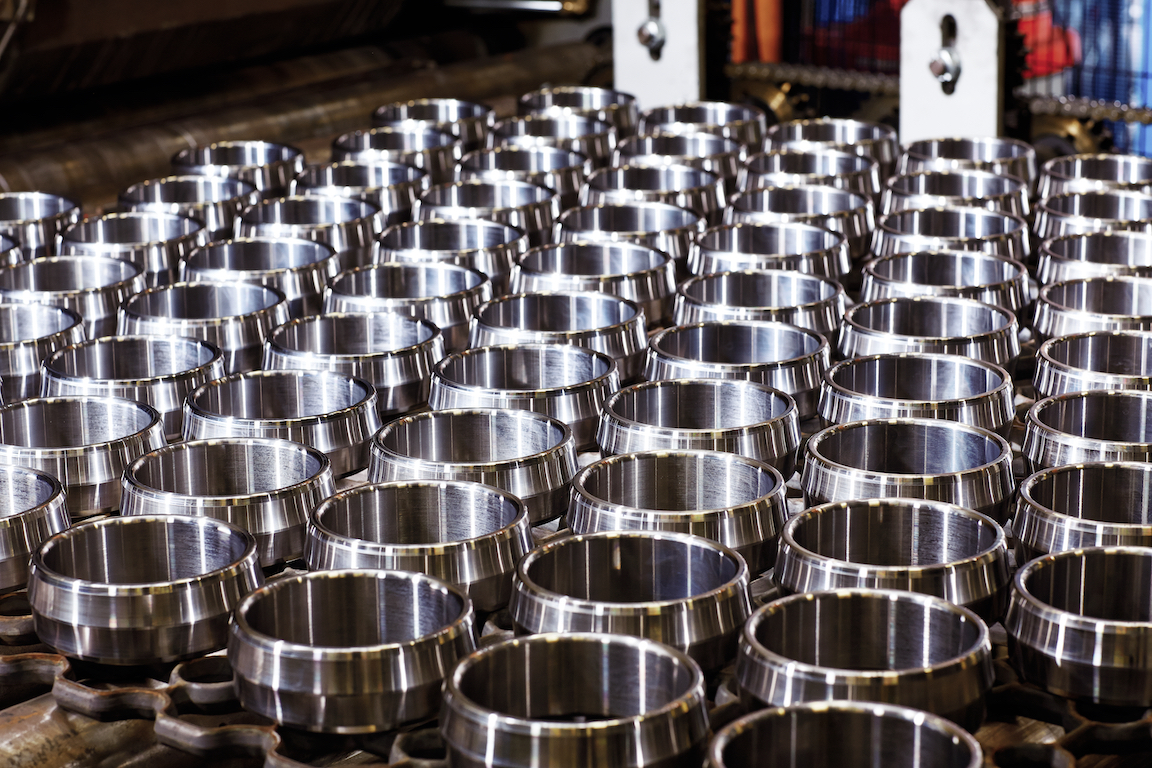
Sun Power
In the German town of Fürth, close to Nürnberg, a small solar company has grown to become a major supplier of all things photovoltaic as well as a creator of complete solar power stations, including one for SKF.
In the German town of Fürth, close to Nürnberg, a small solar company has grown to become a major supplier of all things photovoltaic as well as a creator of complete solar power stations, including one for SKF.
The German companySunline AG has more than 20 years of experience in building solar power stations. Now it is building a new power station for SKF on the roof of its Logistics Services Centre in Schweinfurt, Germany.
“When we started 20 years ago, our competitors laughed at us,” says Michael Schatz, chief operating officer of Sunline, “but I used to fill halls with people, and make them enthusiastic for the new technology.”
And Schatz has lost none of his ability to radiate enthusiasm. He bubbles with it as he describes the company, its business and its technology.
“We have a very clear strategy with two elements,” he says. “We are a photovoltaic system house, where you can buy everything you need for photovoltaic power generation and get all the advice you need, and we plan and build complete power stations for investors.”
Sunline was founded in 1986 and went public in 2005. “We now have more than 10 megawatts, just on roofs and just in Germany,” says Schatz. The com-pany’s 110 staff members produce a turnover of between 80 and 100 million euros a year.
Sunline is, of course, being helped by the current concerns about global warming. The European Union says it wants 20 percent of energy produced through renewable sources by 2020. “That’s a trend that will not be reversed,” Schatz says. “The train is now gathering speed.”
And the train isbeing given a good push by the favourable financial framework in which solar energy operates in many countries. In Germany, for example, for the past 17 years electricity suppliers have been legally required to buy power from sustainable sources at a premium price.
The price goes down over time to encourage the development of more efficient technology, but the initial boost has been essential to enable the pioneers to make money. Other countries have followed Germany’s example. And the technology is developing. “In six years, with the increase in other fuel costs and the increase in the efficiency of solar, I imagine we will not need the artificial pricing,” Schatz says.
Currently, though, the beneficial legal financial framework is part of the equation. “We make power stations that make money for their investors,” Schatz says. “And the investors are currently storming our gates.”
That may have something to do with the company’s skill at finding interesting projects, especially in their hometown of Fürth, that advertise their wares effect-ively. There’s the old rubbish dump, which is now a 1.2 megawatt “energy mountain.” Sceptics said that, since the landfill site would slowly sink over time, it would not be possible to put solar panels on it. “We used, in effect, upside-down steel tables, which made everything more stable, and we attached the solar panels to the legs,” explains Schatz. Now the panels cover two sides of the hill, glinting over the trees.
There’s also the850-metre-long “solar wall” by the Fürth Golf Club. A number of different kinds of solar panels are used in the wall to provide a total of 1.02 megawatts of electricity. Fürth, with five megawatts of solar electricity production, now calls itself “Solar Town.” “We largely built it,” says Schatz.
But Sunline is increasingly being attracted to southern climates. “Eight solar modules, made up of a number of photovoltaic cells, produce one kilowatt of electricity a year in Germany,” says Schatz. “In Spain we can get 50 percent more.” In addition, there are large desert areas of Spain and Morocco that are remote enough that no one would be disturbed by a big solar park. “In Germany, we wouldn’t want to see fields covered in panels, so 90 percent of our work here is on roofs,” Schatz says. In the south, Sunline can think big. “We’re planning five and 10 megawatt projects there.”
Sun on the roof
A new roof on SKF’s Logistics Services Centre in Schweinfurt, Germany, offered a good opportunity to do something for the environment. In future, almost all the electricity the centre uses will come from the sun.
Otto Wieber, head of SKF’s Logistics Services Centre in Schweinfurt, Germany, had an idea. The centre needed a new roof, and he believed the time was right to combine it with a photovoltaic power station. “It took a long time to convince people,” he says, “but now it’s done, and everyone is interested. SKF Logistics Services people in other countries are thinking of doing the same thing.”
The renewal of the roof, which was undertaken by two local firms, Röder and Handschuh, was a challenge in itself. With business booming, the centre had to keep operating, which meant the roof had to be replaced in small sections so that work underneath was not disrupted. To make this possible, a small yard was created in the centre of the building to house a crane. The yard had to be walled off and provided with proper drainage so that the main building remained dry. The crane, which had a reach of 150 metres in diameter (the largest ever to be built in Germany inside a building), could extend out over the building to pick up material – as much as 2.8 tonnes – and deliver it to any part of the roof.
In line with SKF’s sustainability strategy, the materials used in the new roof can all be disposed of at the end of their life without negative impact on the environment. But at least as important in terms of sustainability is what’s on top of the roof: thousands of solar cell modules.
Sunline, of nearby Fürth, is building the power station.
“When the contract for the roof was put out to tender, it referred to integrating the photovoltaic plant with the new roof,” says Sunline chief operating officer Michael Schatz. “So the other companies suggested doing just that and screwing the modules into the roof. But we thought that you would then have hundreds of thermal bridges, and so we proposed fastening the modules to trapezoidal sheet metal and simply holding the sheets on the roof with concrete blocks. I think that’s why we got the contract.”
The new power stationcovers 15,000 square metres and produces up to 700,000 kilowatts of electricity every year. Around 3,900 solar modules can produce enough electricity for 175 four-person households, leading to a reduction of 270 tonnes of carbon dioxide a year.
SKF expects that the project will provide 90 percent of the Logistics Services Centre’s power, but the staff is working hard to make energy use more efficient. Karl-Heinz Burkhard, SKF’s Logistics Services project leader, says, “This has been a big boost for the people here. They’ve seen that SKF is not just talking; it’s doing something about sustainability.” There are new windows, a new heating system is re-using the warmth of ventilated air to heat fresh air, and the warm-water circuit is heated directly by the sun.
Perhaps the clearest evidence of SKF’s commitment is the fact that the power station is expected to pay for itself in 12 years. That’s much longer than SKF’s usual requirement for capital projects.
Says SKF Germany spokesman Walter Ragaller: “We want this to be a showcase project. We’ve had the Schweinfurt city council and a Green Party member of parliament here, and we want to have school classes visiting as well.” There are plans for a visitors’ centre on the roof, so that people can view the power station, whatever the weather.


